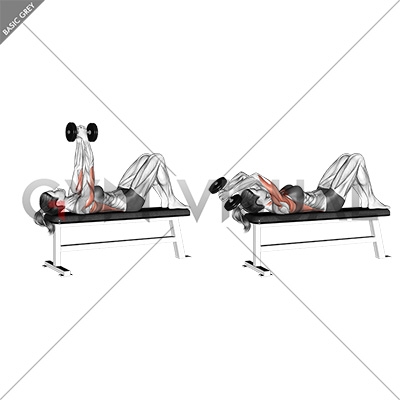

The pecs stretch nicely on the way down, but no matter how hard you squeeze on the way up, the pecs do virtually nothing when the weights return to the starting position. It's similar to when you're doing dumbbell chest flyes.

Sure, you get an amazing stretch on the way down, but you lose the benefit of constant tension. Once you return to the starting position, the weight hovers directly over the shoulder joint and you lose tension on the lats right when you want them to be flexed as hard as possible. How about free-weight pull-overs using a dumbbell or barbell? The problem with these is what happens at the end of each rep. Pull-ups and rows are solid choices here, but they're by no means the only ones.
#Bent over dumbbell pullover full
So let's all go gun our lats, right? Perfect-just pick an exercise that allows for a full range of motion and intense loading when the lats are maximally contracted. That's right: If your lower-body lifts aren't where you want them to be, the answer might be in your upper back. Sure, they help get you up to the bar during a pull-up, but they also help keep your chest vertical during a squat and prevent your back from rounding during a deadlift. This diverse set of muscle actions means the lats are involved in tons of exercises. The lats primarily extend, adduct, and internally rotate the shoulder, but they also act as lumbar extensors, meaning they help arch the lower back. Triangular in shape, they originate at the lower back and run up either side of the spine to the humerus. The lats, short for latissimus dorsi, are the largest muscles of the back. Let's breathe some new life into this old-school classic. If you do it right, it can improve both your ab strength and your overhead lifts. 1 But I would argue that this move is equally deserving of a place in your back routine. That's understandable, since previous research has shown higher activation of the chest muscles compared to back muscles during barbell pull-overs. They're simply misunderstood!įor example, it seems that most guys who do pull-overs these days only do it as a chest exercise. But after seeing this over and over again enough times, I've come to the realization that they haven't been forgotten. Every article written about the pull-over in the past 10 years calls it a "lost" or "forgotten" exercise.


 0 kommentar(er)
0 kommentar(er)
